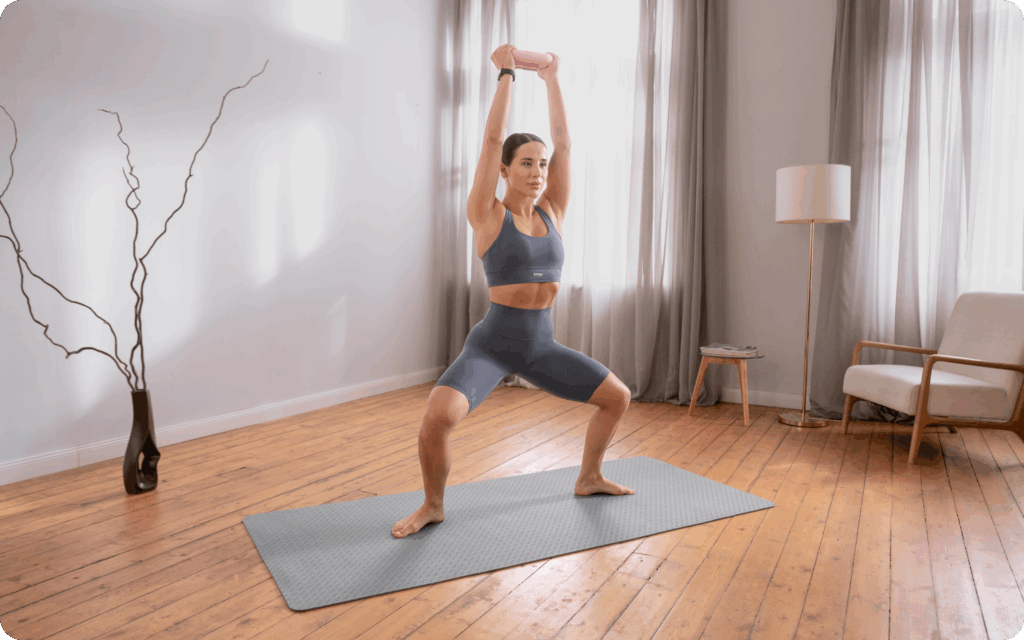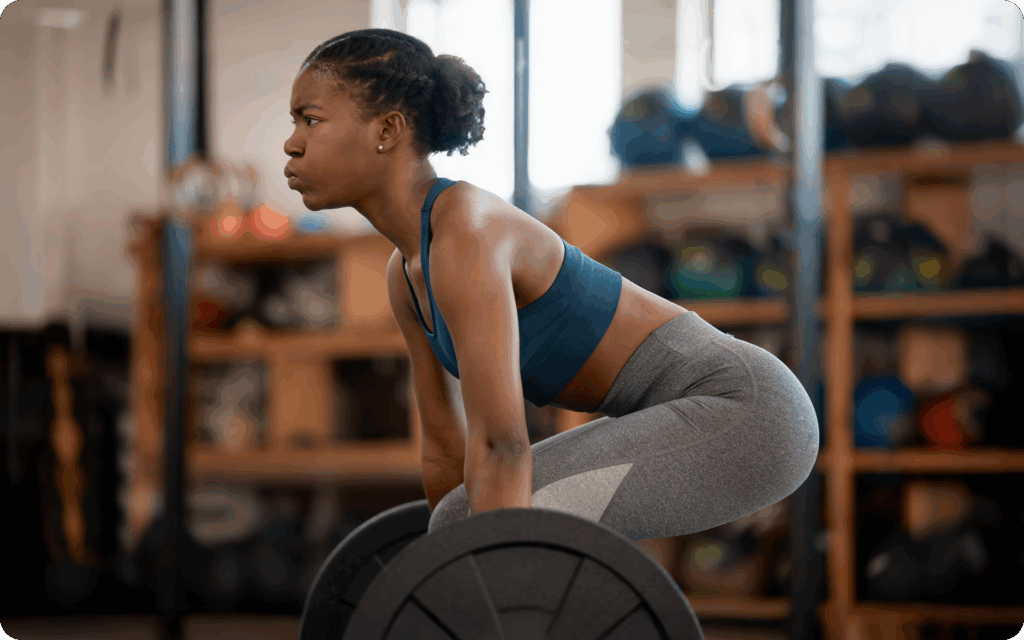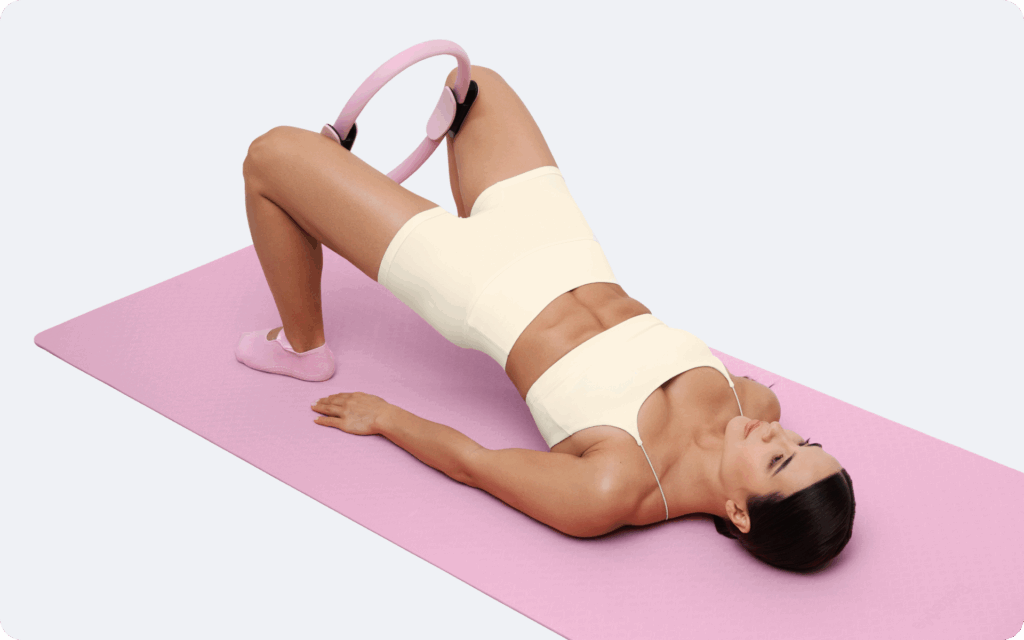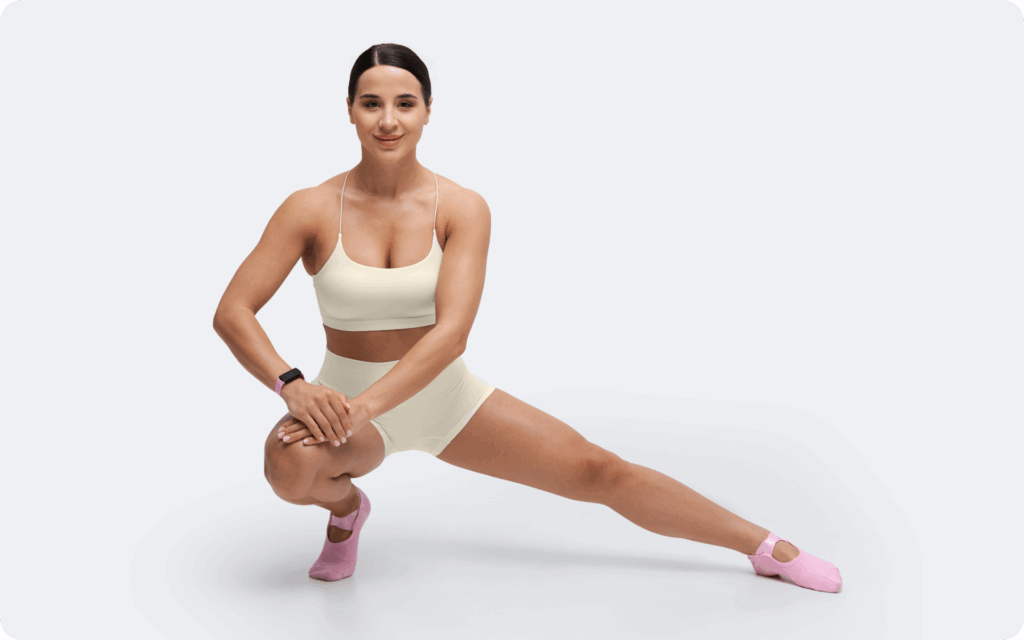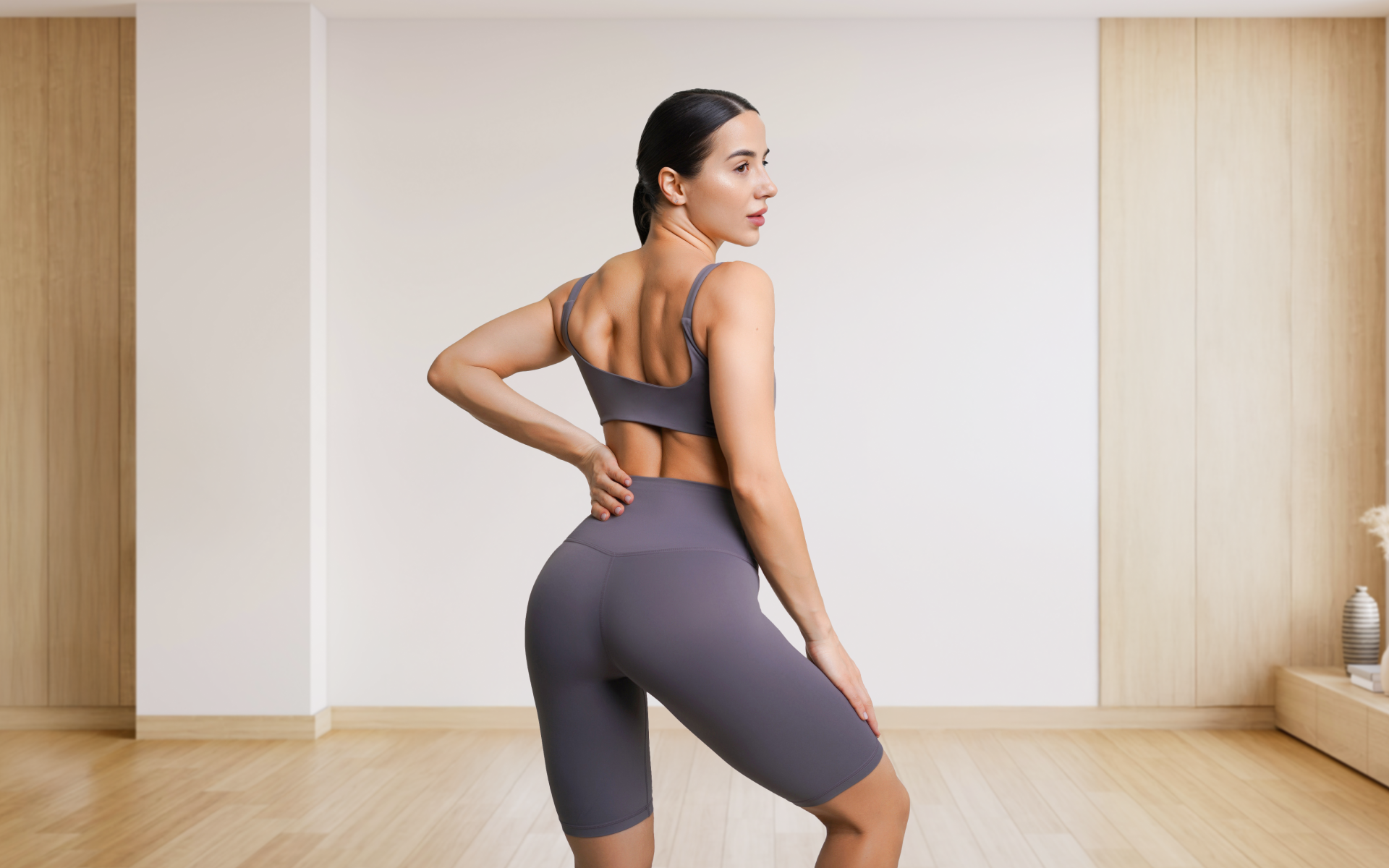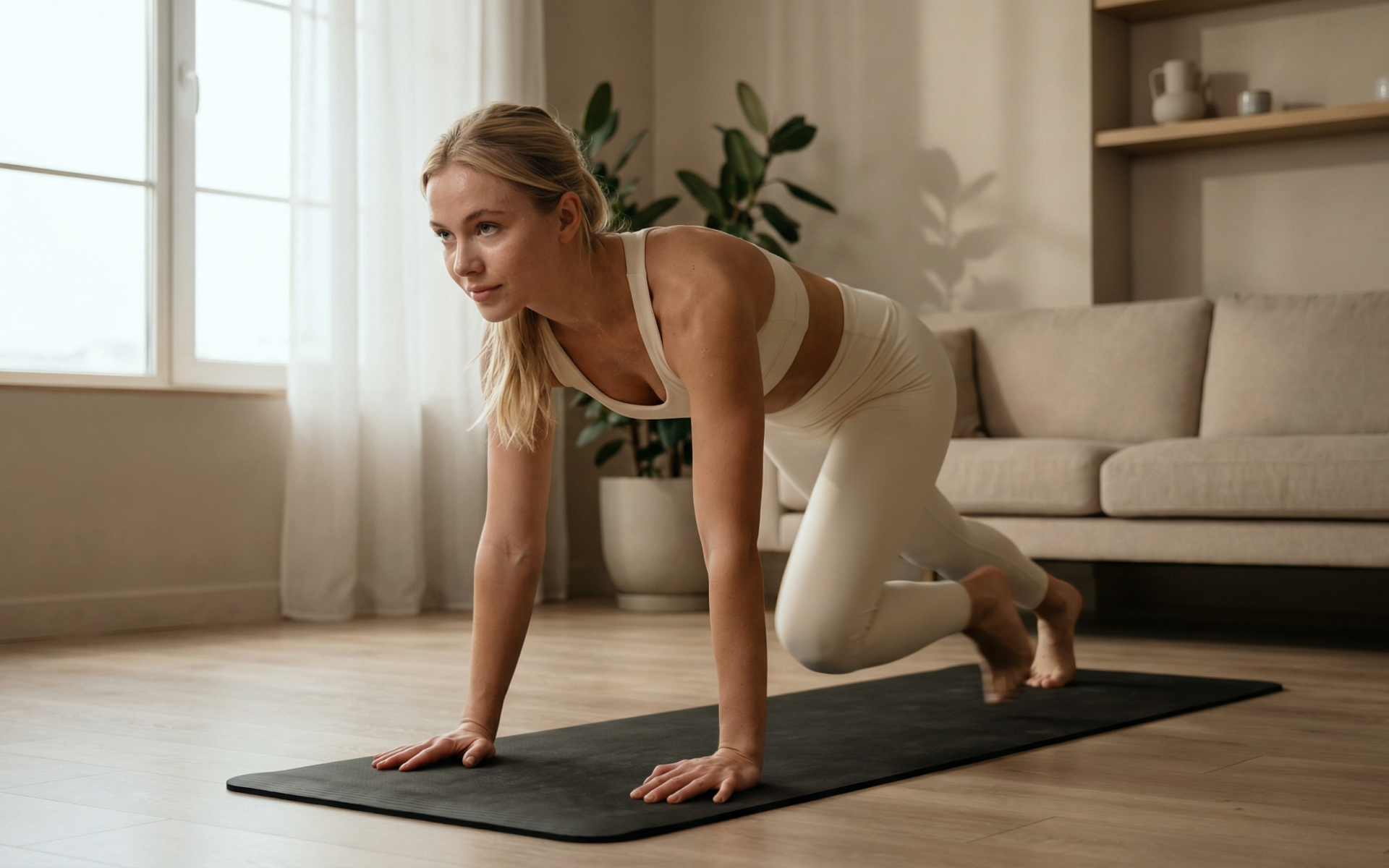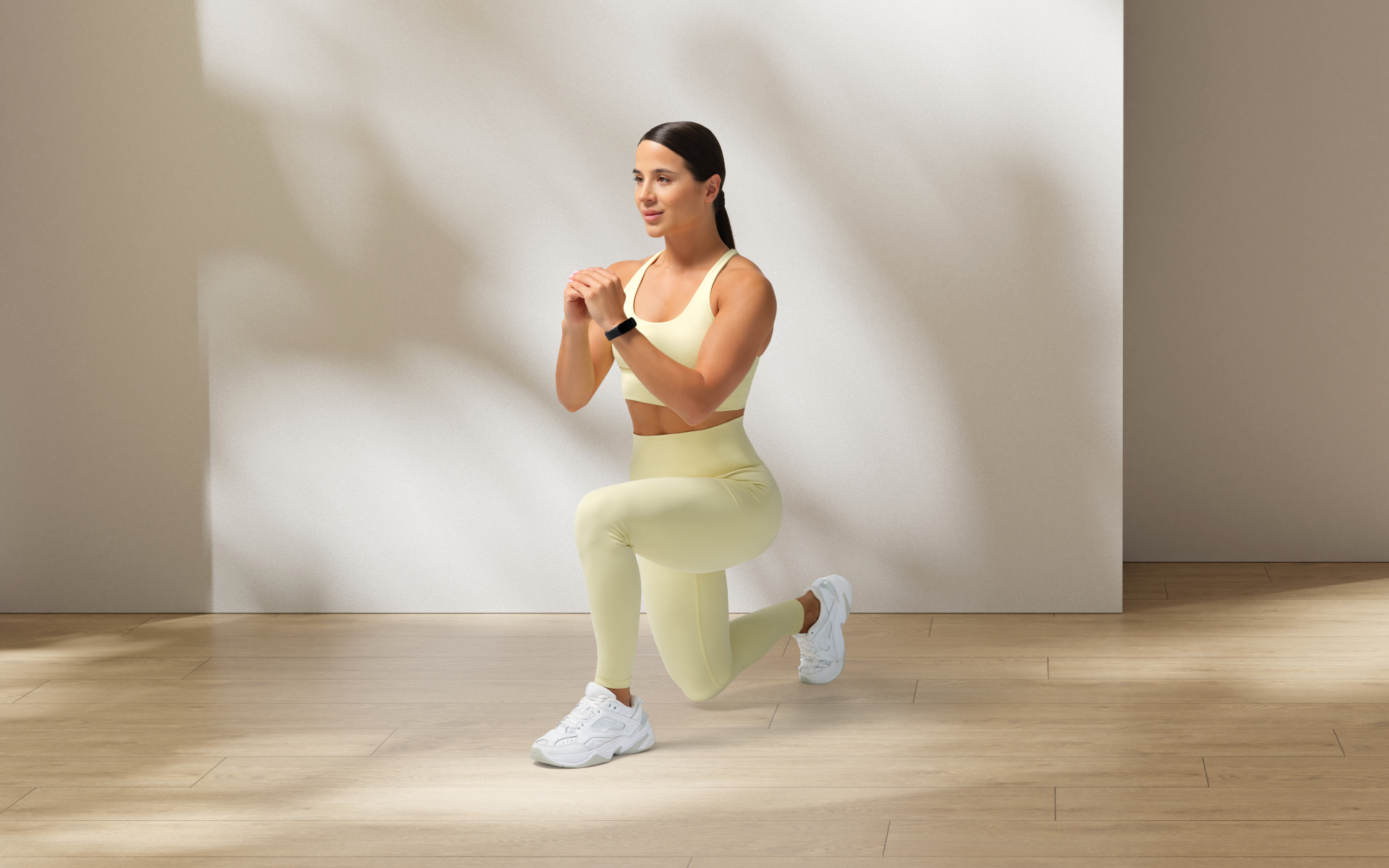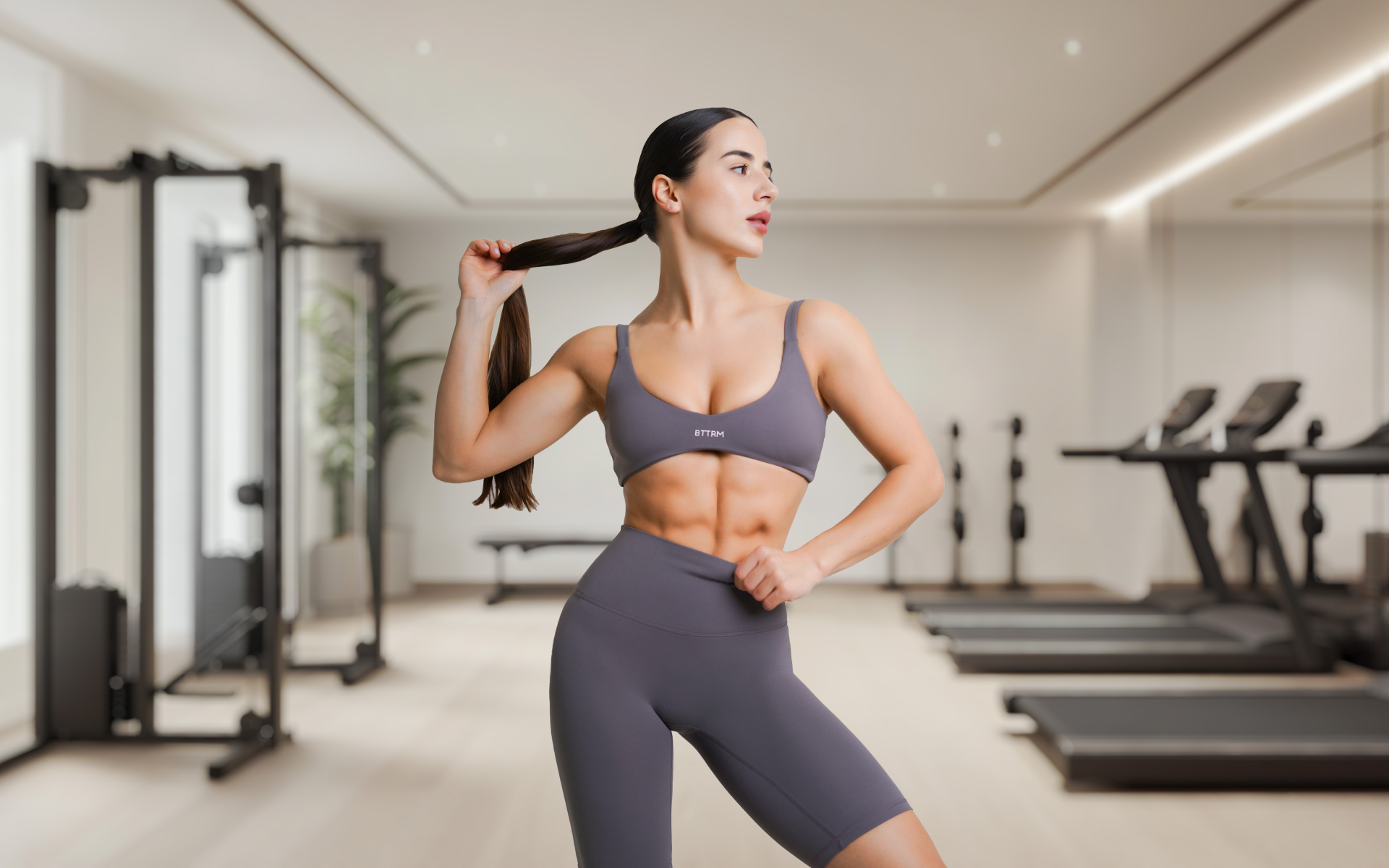Building stronger glutes is about more than just aesthetics – it’s fundamental to improving your posture, increasing your power, and preventing injuries. Your gluteal muscles – the gluteus maximus, medius, and minimus – are the powerhouse of your lower body. A targeted plan is essential to develop them effectively.
This article provides a structured, evidence-based glute building workout plan that’s designed for beginners. We’ll break down the science of muscle growth, detail six essential exercises, and provide a clear path to follow. You won’t just learn what to do, but why you’re doing it, empowering you to train with purpose and achieve sustainable results.
Can I Grow My Glutes in 3 Months?
Yes, you can absolutely see noticeable changes in your glutes in three months, particularly as a beginner. When you first start resistance training, your body is highly responsive to the new stimulus. This period, which is often called “newbie gains”, is when muscle growth can happen relatively quickly (1).
A consistent and well-structured program focused on progressive overload will yield visible results within 12 weeks (2). While you won’t reach your maximum genetic potential in this timeframe, you can expect to see improvements in muscle fullness, shape, and strength. The key is consistency in your training, nutrition, and recovery.
What Makes Your Glutes Grow Faster?
Glute muscle growth, or hypertrophy, is driven by a few core principles (3). Understanding these will help you optimize your training and accelerate your progress.
- Mechanical Tension: This is the primary driver of muscle growth. It refers to the force placed on your muscles when you lift weights (4). To maximize mechanical tension, you need to challenge your glutes with loads that are heavy enough to be difficult, particularly in the final few repetitions of a set.
- Progressive Overload: To keep growing, your muscles must be subjected to a progressively greater challenge over time. This doesn’t always mean lifting heavier (5). You can also add more reps, more sets, or improve your form, control, and complexity (6, 7). The goal is to consistently do more than you did before.
- Mind-Muscle Connection: Actively thinking about the muscle you’re working during an exercise can increase its activation (8). For glutes, this means focusing on squeezing them at the peak of the movement and controlling the lowering phase. This ensures the glutes are doing the work, not other muscle groups.
- Adequate Recovery and Nutrition: Muscle growth happens when you rest, not when you train. Getting enough sleep and consuming sufficient protein gives your body the resources it needs to repair and build muscle tissue. Without these, your efforts in the gym will be compromised (9).
Read more: Pilates Moves For Glutes: 5 Easy Ways To Target The Bum
What Exercise Is Best to Grow Glutes?
There is no single “best” exercise for glute growth. Instead, a combination of movements is most effective. Your glutes perform several functions, including hip extension, abduction, and external rotation. A complete program should include exercises that train all these patterns (10).
Recent research has helped clarify the roles of different movements. For years, the squat was seen as the king of lower-body exercises. However, studies have explored its effectiveness compared to more direct glute exercises such as the hip thrust.
A 2023 study published in Frontiers in Physiology found that both the hip thrust and the back squat produced similar levels of glute hypertrophy when training volume and effort were matched (11). This tells us that both are excellent choices.
Another study from 2024 highlighted that adding barbell hip thrusts to a training program led to significantly greater increases in gluteus maximus thickness in untrained women (12).
The takeaway is that a balanced approach works best. Include both a squat or lunge variation (which trains the glutes at a long muscle length) and a hip thrust or bridge variation (which creates high tension at the top of the movement). This combination ensures you stimulate the glute fibers in different ways for more comprehensive development.
Whether you’re a workout beast or just a beginner making your first foray into the world of fitness and dieting – BetterMe has a lot to offer to both newbies and experts! Install the app and experience the versatility first-hand!
What Is a Targeted Glute Building Workout Plan?
A targeted plan is one that is specifically designed to prioritize the gluteal muscles. It selects exercises, set and rep schemes, and training frequencies to maximize glute stimulation while managing fatigue.
Here are the six exercises that form the foundation of our beginners’ glute building workout plan.
For each exercise, we’ll use the concept of reps in reserve (RIR) to manage intensity. RIR is the number of repetitions you could have done at the end of a set before reaching muscular failure (13). An RIR of 2 means you stopped the set but could have completed two more reps with good form.
1. Barbell Hip Thrust
This is a premier exercise that targets the gluteus maximus. It allows you to use significant weight, creating high mechanical tension.
- How to Do It:
- Sit on the floor with your upper back against a sturdy bench. Place a padded barbell across your hips.
- Your feet should be flat on the floor, about shoulder-width apart, with your knees bent at a 90-degree angle.
- Drive through your heels to lift your hips toward the ceiling until your body forms a straight line from your shoulders to your knees. Keep your chin tucked.
- Squeeze your glutes hard at the top for a moment.
- Lower your hips back down with control.
- Beginner Guidance: 3 sets of 8-12 reps at RIR 2.
- Regression: Use a dumbbell instead of a barbell, or perform the exercise with only your body weight. A glute bridge on the floor is a great starting point.
- Progression: Increase the weight on the bar or add a pause at the top of the movement.
2. Romanian Deadlift (RDL)
The RDL is a hip-hinge movement that targets the glutes and hamstrings. It’s excellent for training the glutes in their stretched position. This is an ideal movement to include in a glute building workout plan with dumbbells.
- How to Do It:
- Stand with your feet hip-width apart, holding a barbell or two dumbbells in front of your thighs.
- Keeping your back straight and a slight bend in your knees, push your hips backward as if trying to touch a wall behind you.
- Lower the weight along your shins until you feel a deep stretch in your hamstrings. Don’t round your lower back.
- Drive your hips forward and squeeze your glutes to return to the starting position.
- Beginner Guidance: 3 sets of 8-12 reps at RIR 2.
- Regression: Practice the hip-hinge motion with a dowel or PVC pipe on your back to maintain a neutral spine.
- Progression: Increase the weight or slow down the lowering (eccentric) phase to 3-4 seconds.
3. Bulgarian Split Squat
This single-leg exercise challenges your stability while heavily loading the glute of your front leg. It’s a fantastic movement for correcting muscle imbalances.
- How to Do It:
- Stand a few feet in front of a bench. Place the top of one foot on the bench behind you.
- Hold dumbbells in each hand if you’re using weight. Keep your chest up and your core engaged.
- Lower your body until your front thigh is parallel to the floor or as low as your mobility allows.
- Push through your front heel to return to the starting position. Complete all reps on one side before switching.
- Beginner Guidance: 3 sets of 10-15 reps per leg at RIR 2.
- Regression: Perform the exercise without weights or reduce the range of motion. A stationary lunge is a good alternative.
- Progression: Increase the weight, add a pause at the bottom, or elevate your front foot slightly. This is an advanced variation for a glute building workout plan that female lifters can use to intensify their training.
If you’re looking for a complete routine to shape and strengthen your lower body, check out our guide to the ultimate bubble butt workout.
4. Reverse Lunge
The reverse lunge is a knee-friendly lunge variation that places more emphasis on the glutes and hamstrings than a forward lunge.
- How to Do It:
- Stand with your feet together, holding dumbbells if you’re using them.
- Take a large step backward with one foot, lowering both knees to about a 90-degree angle. Your front knee should remain behind your toes.
- Keep your chest up and lean your torso slightly forward to increase the stretch on the glute of your front leg.
- Push off your back foot and drive through your front heel to return to the starting position.
- Beginner Guidance: 3 sets of 10-15 reps per leg at RIR 2-3.
- Regression: Perform the exercise with bodyweight only, or use a TRX or railing for support.
- Progression: Increase the weight or perform the lunge from a small deficit (standing on a plate) to increase the range of motion.
5. 45-Degree Hip Extension
This exercise isolates the glutes and hamstrings without putting significant stress on the spine. It’s perfect for adding volume to your routine.
- How to Do It:
- Set up on a 45-degree hyperextension bench with the pad positioned just below your hip bones. Your heels should be secured.
- Allow your upper body to hang down. To bias the glutes, slightly round your upper back and keep your chin tucked.
- Squeeze your glutes to lift your torso until your body is in a straight line. Avoid hyperextending your lower back.
- Lower yourself back down with control.
- Beginner Guidance: 3 sets of 12-20 reps at RIR 1-2.
- Regression: Perform the exercise with body weight only.
- Progression: Hold a weight plate or dumbbell against your chest.
To specifically target the upper shelf of your glutes, you need exercises that are focused on the gluteus medius and minimus. Explore our detailed guide for an effective upper-butt workout.
6. Banded Hip Abduction
This movement targets the gluteus medius and minimus, the smaller muscles on the side of your hips. These muscles are crucial for hip stability and creating a “rounded” glute look. This is one of the best glute exercises to perform at home.
- How to Do It:
- Sit on a bench or chair with a resistance band looped around your thighs, just above your knees.
- Place your feet flat on the floor, hip-width apart.
- Keeping your feet anchored, push your knees outward against the band’s resistance.
- Hold the outer position for a moment, then slowly return to the start.
- Beginner Guidance: 3 sets of 20-30 reps at RIR 1.
- Regression: Use a lighter band or perform the movement lying on your side (clamshells).
- Progression: Use a heavier band, or perform the exercise on a hip abduction machine.
A glute building workout plan at home can be highly effective using exercises such as banded hip abductions, bodyweight split squats, and glute bridges.
For those who want to focus on creating a lifted and sculpted appearance, specific exercises can make a big difference. Discover which movements are best in our butt lift workout guide.
How Many Times a Week Should the Glutes Be Trained?
For optimal growth, training your glutes 2 to 3 times per week is ideal (14). This frequency allows you to accumulate enough training volume to stimulate hypertrophy while also giving your muscles at least 48 hours to recover between sessions.
A beginner might start with two full-body workouts per week that include 2-3 of the glute exercises listed above. As you become more advanced, you can move to a three-day-a-week schedule with dedicated lower-body days.
Here’s a sample weekly structure:
- Workout A (Monday):
- Barbell hip thrust: 3 x 8-12
- Bulgarian split squat: 3 x 10-15 per leg
- Banded hip abduction: 3 x 20-30
- Workout B (Thursday):
- Romanian deadlift: 3 x 8-12
- Reverse lunge: 3 x 10-15 per leg
- 45-degree hip extension: 3 x 12-20
BetterMe: Health Coaching app helps you achieve your body goals with ease and efficiency by helping to choose proper meal plans and effective workouts. Start using our app and you will see good results in a short time.
How Long Does It Take to See Glute Results?
Patience and consistency are crucial. While some strength gains will be apparent within the first few weeks, visible changes in muscle size typically take longer.
- 4-6 Weeks: You should feel stronger and notice your form improving. Your muscles may start to feel firmer.
- 8-12 Weeks: Noticeable changes in the shape and size of your glutes should be visible. This is where the results of your consistent glute building workout plan become more apparent.
- 6+ Months: With continued progressive overload and proper nutrition, you will see significant transformations.
Remember that genetics, diet, sleep, and stress levels all play a role in your rate of progress. Focus on what you can control: your effort in the gym and your lifestyle habits outside of it.
What Mistakes Stop Glute Growth?
If you’re putting in the effort but not seeing results, you may be making one of these common mistakes.
- Not Training with Enough Intensity: Your sets need to be challenging. If you finish a set feeling like you could have done 5 or more reps, you’re likely not training hard enough to signal muscle growth. Aim for that 1-3 RIR range on most of your working sets.
- Lack of Progressive Overload: Your body adapts quickly. Doing the same weight for the same reps every week will lead to a plateau (15). Track your workouts and strive to do a little more each session.
- Poor Form: Using improper technique can shift the tension from your glutes to other muscles, like your lower back or quads. Focus on quality movement and the mind-muscle connection. It’s better to use less weight with perfect form than to lift heavy with poor technique.
- Neglecting Nutrition and Recovery: You cannot out-train a bad diet. Ensure you are eating enough calories and protein to support muscle growth (16). Prioritize 7-9 hours of quality sleep per night, as this is when your body does most of its repairing and building (17).
- Only Doing One Type of Exercise: A sole reliance on squats or hip thrusts is a mistake. As we’ve discussed, a variety of exercises that train the glutes through different movement patterns and ranges of motion will produce the best results (18).
Read more: 8 Lower-Body Pilates Exercises for Strong Legs
No, this isn’t an effective strategy. While it may create some initial muscle soreness, your body will quickly adapt. Muscle growth requires progressive overload (19), and performing 100 bodyweight squats daily doesn’t provide the increasing mechanical tension that is needed for hypertrophy. A structured plan with heavier weights and fewer reps is far more effective. Glutes can grow from a wide range of repetitions, as long as the set is taken close to failure. A good approach is to use a variety of rep ranges: The most important factor for glute growth is a combination of high mechanical tension and consistent progressive overload (4). Exercises that allow you to lift heavy weight safely, such as the barbell hip thrust and Romanian deadlift, are powerful drivers of growth. Combining these with single-leg work and isolation movements creates a complete and effective stimulus. For active individuals who are looking to build muscle, a protein intake of around 1.4-2.0 grams per kilogram of body weight is recommended (20). Spread this intake across several meals throughout the day to optimize muscle protein synthesis, the process of building new muscle tissue.Frequently Asked Questions
Will 100 squats a day make my bum bigger?
How many reps to grow glutes?
What grows the glutes the most?
How much protein do I need to grow glutes?
The Bottom Line
Building stronger, more developed glutes is an achievable goal for any beginner. It requires a smart approach that is grounded in the principles of exercise science, not endless reps or trendy workouts. By focusing on a core set of proven exercises, mastering your form, and applying the principle of progressive overload, you have all the tools you need.
This glute building workout plan provides the structure. Now, it’s up to you to bring the consistency and effort. Combine your training with adequate nutrition and recovery, and you’ll be well on your way to building the strong, functional glutes you desire.
DISCLAIMER:
This article is intended for general informational purposes only and does not serve to address individual circumstances. It is not a substitute for professional advice or help and should not be relied on for making any kind of decision-making. Any action taken as a direct or indirect result of the information in this article is entirely at your own risk and is your sole responsibility.
BetterMe, its content staff, and its medical advisors accept no responsibility for inaccuracies, errors, misstatements, inconsistencies, or omissions and specifically disclaim any liability, loss or risk, personal, professional or otherwise, which may be incurred as a consequence, directly or indirectly, of the use and/or application of any content.
You should always seek the advice of your physician or other qualified health provider with any questions you may have regarding a medical condition or your specific situation. Never disregard professional medical advice or delay seeking it because of BetterMe content. If you suspect or think you may have a medical emergency, call your doctor.
SOURCES:
- Muscle hypertrophy, hormonal adaptations and strength development during strength training in strength-trained and untrained men (2003, link.springer.com)
- Improving muscle size with Weider’s principle of progressive overload in non-performance athletes (2021, researchgate.net)
- The Mechanisms of Muscle Hypertrophy and Their Application to Resistance Training (2010, journals.lww.com)
- Anabolic signals and muscle hypertrophy – Significance for strength training in sports medicine (2025, sciencedirect.com)
- Progressive Overload Explained: Grow Muscle & Strength Today (n.d., blog.nasm.org)
- Exercise progression and regression (n.d., us.humankinetics.com)
- Complexity: A Novel Load Progression Strategy in Strength Training (2019, frontiersin.org)
- New insights on mind-muscle connection: Motor imagery concomitant to actual resistance training enhances force performance (2025, sciencedirect.com)
- Exploring the Science of Muscle Recovery (n.d., blog.nasm.org)
- PROGRAM DESIGN CONSIDERATIONS FOR OPTIMAL STRENGTH AND HYPERTROPHY OF THE GLUTE MUSCLES (2023, nsca.com)
- Hip thrust and back squat training elicit similar gluteus muscle hypertrophy and transfer similarly to the deadlift (2023, frontiersin.org)
- Addition of The Barbell Hip Thrust Elicits Greater Increases in Gluteus Maximus Muscle Thickness in Untrained Young Women (2024, journal.iusca.org)
- Reps in Reserve (RIR): What You Need to Know (n.d., blog.nasm.org)
- Progression Models in Resistance Training for Healthy Adults (2009, journals.lww.com)
- The Plateau in Muscle Growth with Resistance Training: An Exploration of Possible Mechanisms (2024, pubmed.ncbi.nlm.nih.gov)
- 5 nutrition tips to maximize workouts (2025, mayoclinichealthsystem.org)
- Sleep and muscle recovery: endocrinological and molecular basis for a new and promising hypothesis (2011, pubmed.ncbi.nlm.nih.gov)
- Training the Glutes (2020, researchgate.net)
- Progressive overload without progressing load? The effects of load or repetition progression on muscular adaptations (2022, pmc.ncbi.nlm.nih.gov)
- International Society of Sports Nutrition Position Stand: protein and exercise (2017, jissn.biomedcentral.com)

